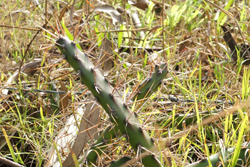About the Regional Weed Strategy and Biosecurity Act
The Biosecurity Act 2015 came into effect on 1 July 2017 and replaces all or part of 14 Acts including the Noxious Weed Act 1993.
The regulations, instruments, policies and procedures that underpin the Biosecurity Act 2015 have been developed in consultation with industry, community and government partners to ensure the development of a regulatory framework that will effectively respond to and manage biosecurity risks.
Central to the control of invasive plants is the enforceable concept of General Biosecurity Duty. This means any person dealing with plant matter must take measures to prevent, minimize or eliminate the biosecurity risk (as far as practicable). Further background information on General Biosecurity Duty and the other regulatory instruments of the Act can be found in the Hunter Regional Strategic Weed Management Plan 2023-2027 and at NSW DPI Weedwise
Listed below are the plants that the UHWA considers to the priority weeds for area of operation of the UHWA. To inform landholders of the degree of control expected of these priority weeds UHWA has developed a General Biosecurity Duty Control Guideline. Listed with each weed below is a link to the relevant weeds identification and control information contain at NSW DPI Weedwise.











